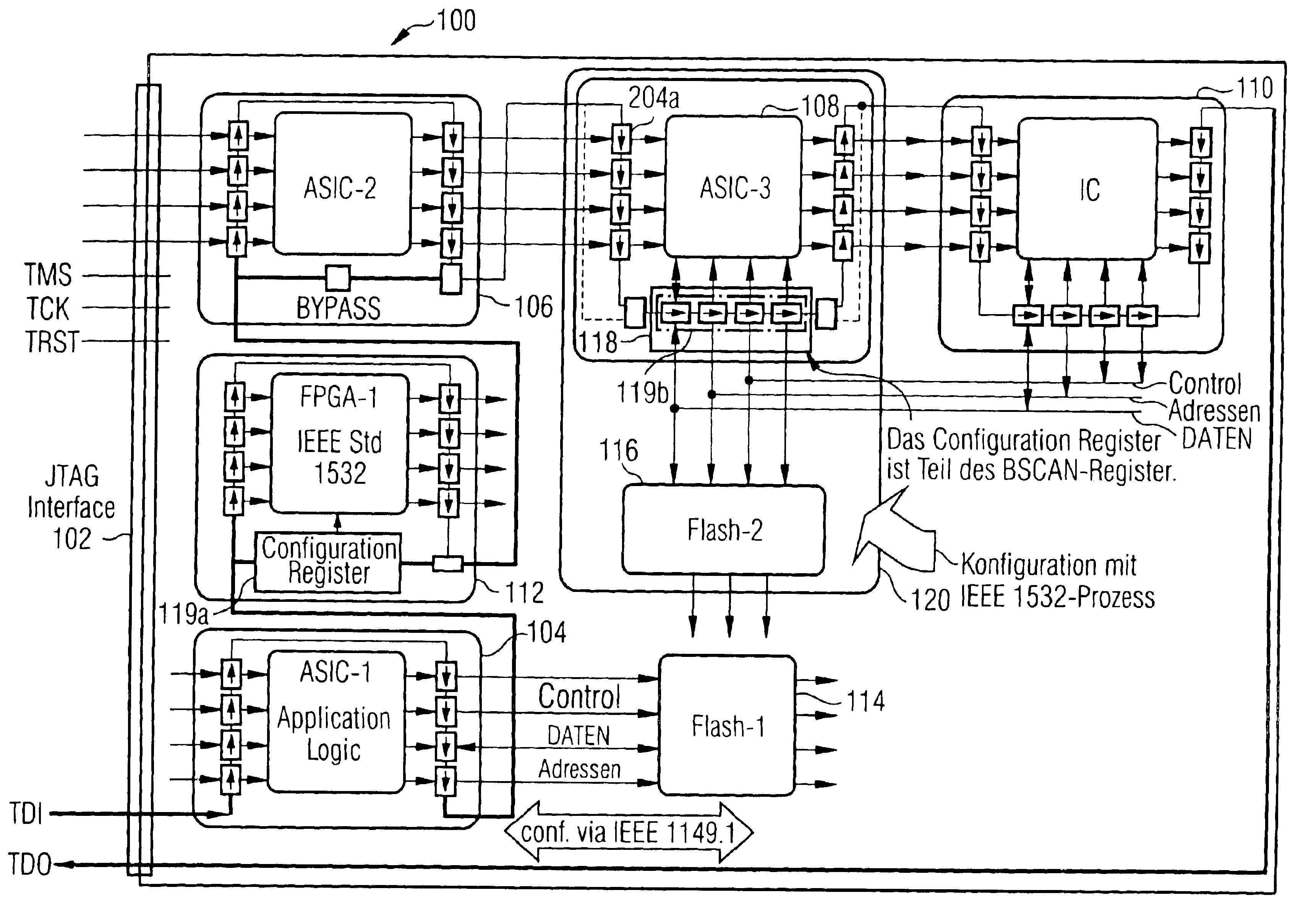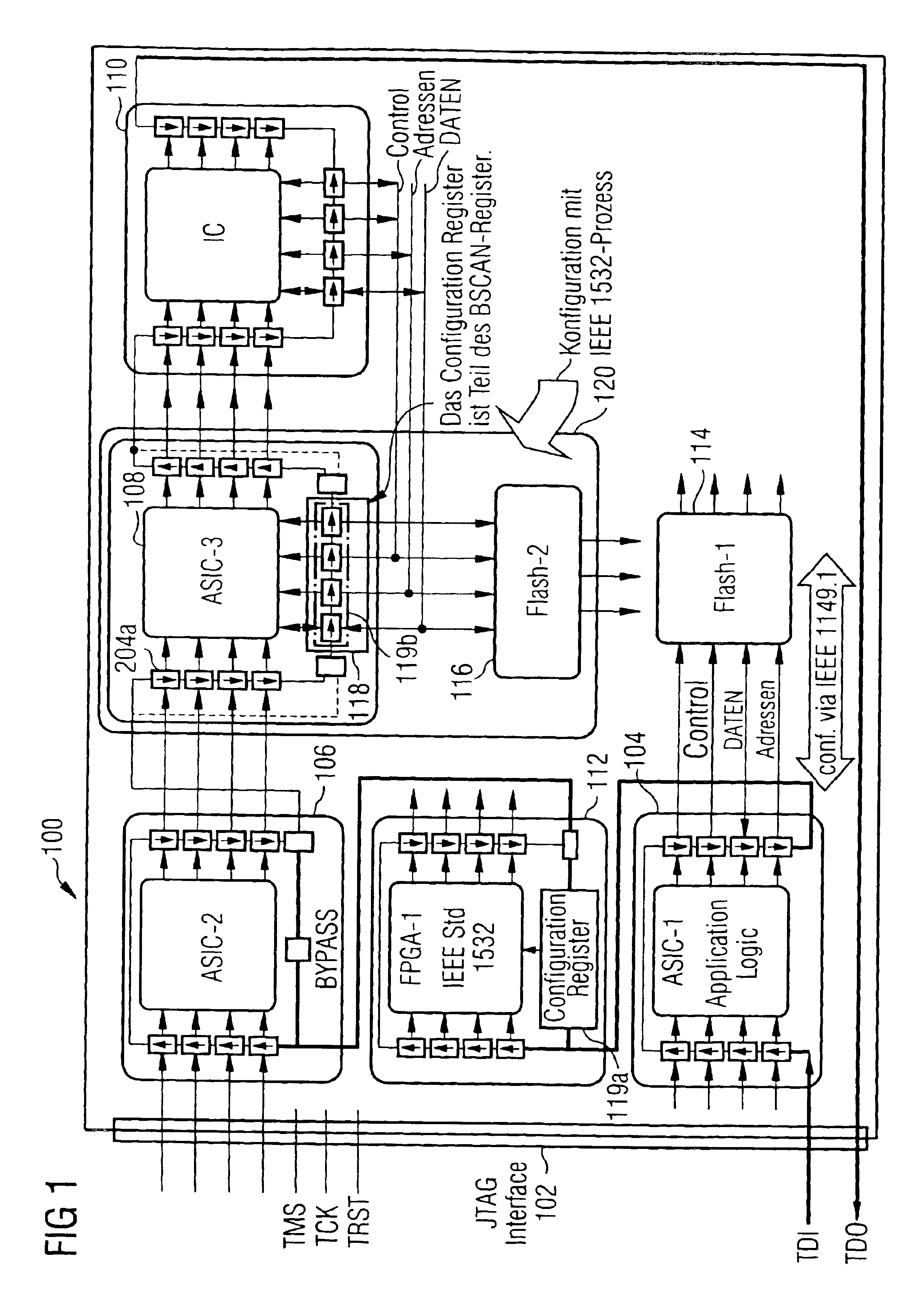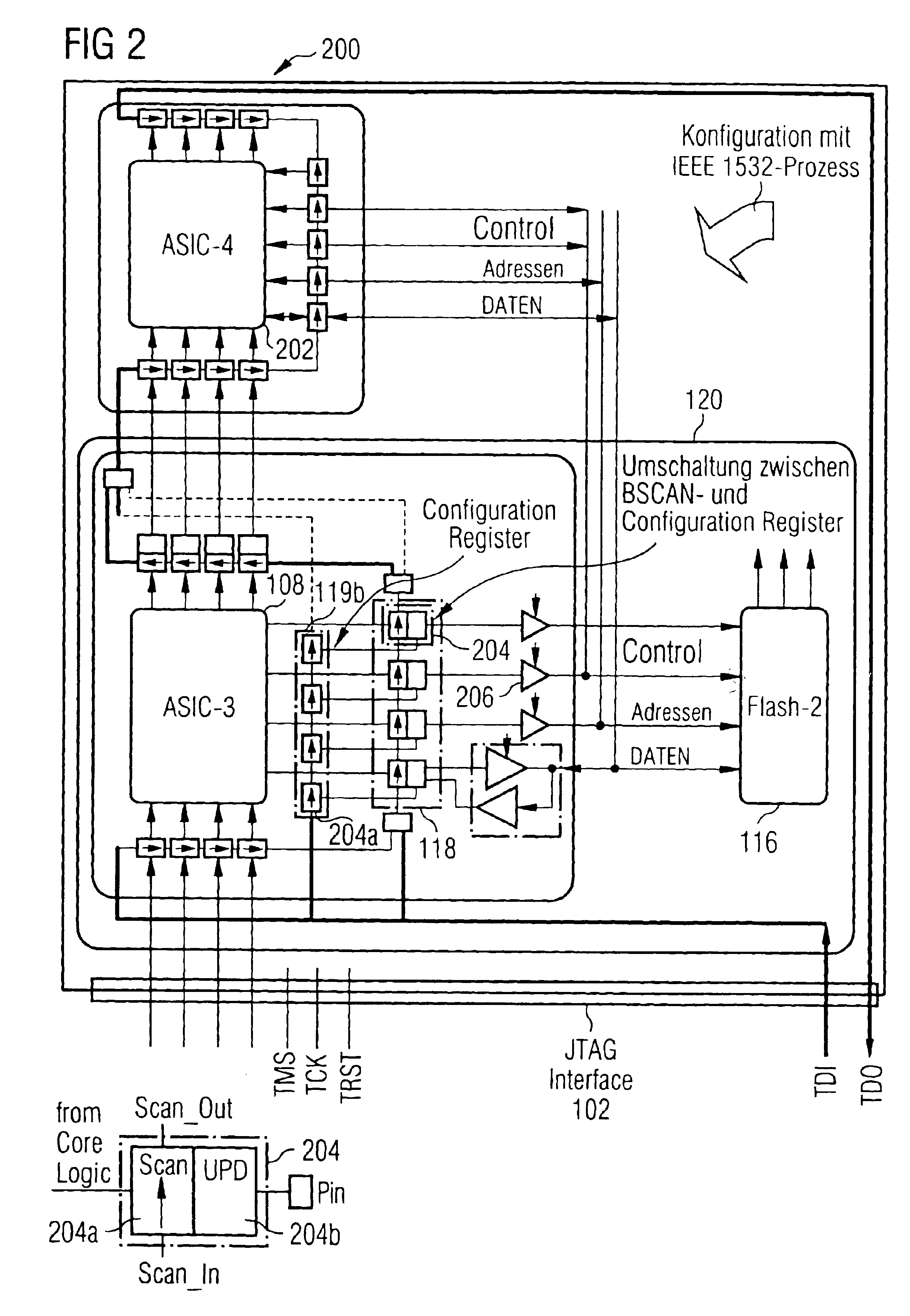Programming flash memory via a boundary scan register
a programming flash memory and boundary scan technology, applied in the field of boundary scan register programming flash memory, can solve the problems of inability to simultaneously program a number of integrated semiconductor components mounted on the same circuit board, insufficiently achieving the practical success of this standard, and inability to achieve the effect of reducing the programming effor
- Summary
- Abstract
- Description
- Claims
- Application Information
AI Technical Summary
Benefits of technology
Problems solved by technology
Method used
Image
Examples
Embodiment Construction
[0025]The invention is explained in more detail below using the exemplary embodiments illustrated in FIGS. 1 to 3. The meaning of the symbols provided with reference numbers in FIGS. 1 to 3 can be taken from the enclosed list of reference numbers.
[0026]Within the context of an exemplary embodiment of the present invention there is provision for an ASIC 108, suitably adapted for on-board programming and In-System Configuration (ISC) of a flash memory 116, which can be controlled via a JTAG interface 102 in accordance with IEEE Standard 1149.1 and reprograms or configures the flash memory 116 even during operation. In accordance with the invention, ASIC 108 and flash memory to be programmed 116 are considered with the context of IEEE Standard 1532 as contiguous unit 120 (see FIGS. 1 and 2). As a result it makes no difference whether flash memory 116 is inside or outside ASIC 108.
[0027]If one gives this ASIC 108 characteristics in accordance with IEEE Standard 1532, the flash memory 11...
PUM
 Login to View More
Login to View More Abstract
Description
Claims
Application Information
 Login to View More
Login to View More - R&D
- Intellectual Property
- Life Sciences
- Materials
- Tech Scout
- Unparalleled Data Quality
- Higher Quality Content
- 60% Fewer Hallucinations
Browse by: Latest US Patents, China's latest patents, Technical Efficacy Thesaurus, Application Domain, Technology Topic, Popular Technical Reports.
© 2025 PatSnap. All rights reserved.Legal|Privacy policy|Modern Slavery Act Transparency Statement|Sitemap|About US| Contact US: help@patsnap.com



